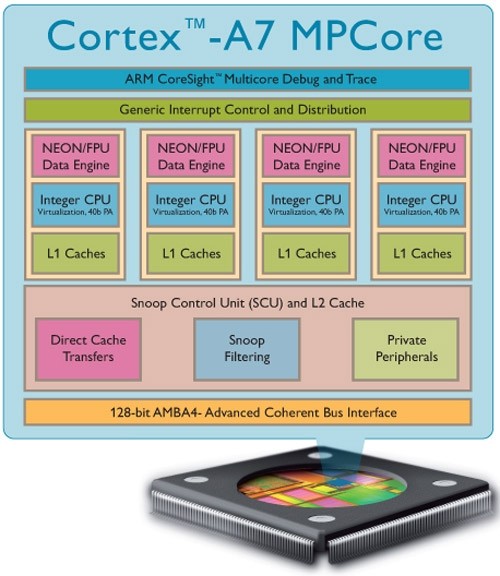ARM has unveiled a new chip that will enable more efficient and affordable mobile processors. Based on the company's 28nm fabrication, the Cortex A7 reportedly consumes five times less power and measures one-fifth the size of the 45nm Cortex A8, which is used inside the Apple A4, Samsung Hummingbird and Texas Instruments OMAP3. ARM will compliment that efficiency by pairing the Cortex A7 with quicker, more power hungry processing cores.
Additionally, the A7 will make it easier to produce sub-$100 smartphones, which will boost adoption rates in developing regions. "We can see the developed world moving on and mobile being the nexus for all sort of consumer electronics. In the Bric countries (Brazil, Russia, India and China) we are seeing catch-up," ARM CEO Warren East told the BBC. "As we look forward these smartphones are going to be totally ubiquitous and in the much less developed areas..."

The company's heterogeneous "Big.LITTLE" design concept will see the Cortex A7 packaged with the upcoming Cortex A15 as a system-on-a-chip that will allocate tasks to the best available core. The A7 will compute lighter loads while the A15 will tackle requests that are more intensive. It's worth noting that the efficiency gains mentioned above are specifically limited to the A7 so it's unclear what you can expect from this package as a whole, but it should be awesome.
The A15 was announced last September and is expected to ship sometime in early 2012. It will be offered in various flavors with clock speeds up to 2.5GHz and it's said to deliver 40% more performance than the A9. Several licensees have already announced next-generation SoCs based on the A15, including Nvidia's fourth-gen Tegra "Wayne," Texas Instruments' OMAP 5 and ST-Ericsson's Nova A9600. Samsung, LG, Apple and others will undoubtedly utilize A15 cores as well.